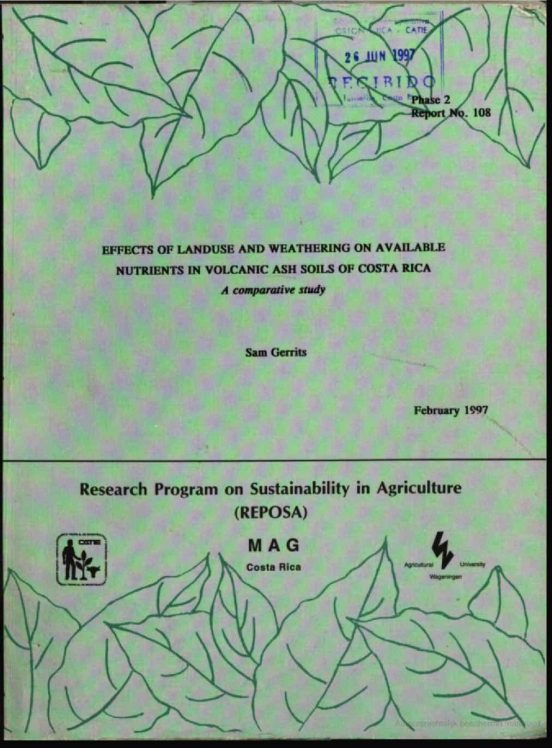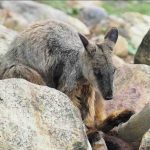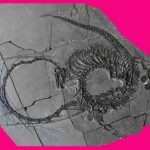Afstudeeronderzoek voor het behalen van de titel van ingenieur, Wageningen Agricultural University (WUA), najaar 1996. Dit onderzoek vond plaats onder begeleiding van prof. dr. ir. Nico van Breemen, hoogleraar fysische geologie en ecologie aan de WUA, met goedkeuring van en onder aanvullende begeleiding van prof. dr. ir. Guus Loch en prof. dr. ir. Olaf Schuiling, geochemistry of the Earth surface, Universiteit Utrecht
Abstract
In the present study two soil types: a highly depleted, old volcanic soil and a young, fertile volcanic soil are compared under three landuse types.
The focus of the study is soil moisture and its chemical composition As a reference, soil sample analyses, mineralogical data and rain inorganic nutrient measurements are used. Due to a higher data resolution of the young soil sampling period, the young soil data are treated more extensively.
Young volcanic soils
Nitrates and other organic acids were found to play a major role in the weathering of the young soil under tropical forest, even though average pH values were high (about pH 5) Individual rain events triggered high biomass decomposition within a day, reflecting the high activity of soil organisms.
Human conversion of forest to grassland (logging) on young volcanic soils was found to enhance the base saturation of the soil and lower the Ca/Mg ratio on the soil organic exchange complex and in soil moisture. This indicates that a main after effect of logging on these young volcanic soils is enhanced weathering. The main proton donor for this enhanced weathering were refractory forest remains (roots) and humic material in the soil.
The subsequent conversion of grassland to plantation on young volanic soils was found to lead to a lowered base saturation, accompanied with peaks of extreme concentration of nutrients in the soil moisture, showing the relative ineffectiveness of used fertilisation techniques. (adding solid artificial N en P compounds bij hand).
Old volcanic soils
In the old volcanic soils under tropical forest. nutrient losses were, as expected, much lower, than in the young soil. Wind carried sea spray was found to have a large influence on the old soil forest nutrient regime.
The conversion of old volcanic soils to grassland (logging) resulted in a much lowered base saturation, reflecting the low nutrient holding capacity of the soil exchange complex, and the removal of main nutrient holding compartment, the vegetation, (and it’s seaspray scavenging ability).
Conversion of grassland on old volcanic soils to plantation led to a situation, similar to that of the young volcanic soils under plantation. Added to this a pronounced dryness was observed.
Old volcanic soils were found to be more susceptible to degradation and erosion, than young volcanic soils. Also, soil organisms in old soils were much more aggressive, as was evident from a pronounced destruction of sampling equipment (artifical roots, made from thin, permeable rubber) in the old volcanic soils.
- Introduction
1.1. The aim of the study
When planning the land use of an area, a quantitative knowledge of the effect of land use on the availability of plant nutrients is of capital importance. In this study the evolution of available nutrient content and weathering regime of a young- and an old tropical soil under a sequence of land use types is examined. The study area is the Atlantic Zone of Costa Rica
1.2. The Atlantic Zone
The Atlantic Zone of Costa Rica comprises the area lying between the Cordillera Central and Cordillera de Talamanca mountain ranges and the Caribbean coast. It covers an area of about 80 by 200 km and is part of the Limon basin. Climatological conditions are relatively constant throughout the year. Mean annual air temperatures are about 28 degrees and annual precipitation usually exceeds 3500 mm. The natural vegetation cover was mostly tropical rainforest. In the last two to four decades extensive deforestation, by commercial logging and reclamation for agriculture, has left only about 25% of the original vegetation cover. Current land use is dominated by large scale cattle raising and banana cultivation on plantations. On a smaller scale subsistence agriculture takes place, in commercially logged areas and on former haciendas. Forest clearing for these haciendas has greatly enhanced deforestation in the past
1.3. Ecology, biogeochemical nutrient cycling, depletion
The complete study is available via Google Books.
The REPOSA Program
The Research Program on Sustainability in Agriculture (REPOSA) is a cooperation between Wageningen Agricultural University (WAU), the Center for Research and Education in Tropical Agriculture (CATIE), and the Costa Rican Ministry of Agriculture and Livestock (MAG). In addition, REPOSA has signed memoranda of understanding with numerous academic, governmental, international, and non-governmental organizations in Costa Rica.
The overall objective of REPOSA is the development of an interdisciplinary methodology for land use evaluation at various levels of aggregation. The methodology, based on a modular approach to the integration of different models and data bases, is denominated USTED (Uso Sostenible de Tierras En el Desarrollo; Sustainable Land Use in Development). REPOSA provides research and practical training facilities for students from WAU as well as from other Dutch and regional educational institutions. REPOSA’s research results are actively disseminated through scientific publications, internal reports, students’ thesis, and presentations at national and international conferences and symposia. Demonstrations are conducted regularly to familiarize interested researchers and organizations from both within and outside Costa Rica with the USTED methodology. REPOSA is financed entirely by WAU under its Sustainable Land Use in the Tropics program. sub-program Sustainable Land Use in Central America. It operates mainly out of Guipiles where it is located on the experimental station Los Diamantes of MAG.
Programa REPOSA
REPOSA (Research Program on Sustainability in Agriculture, o sea Programa de Investigación sobre la Sostenibilidad en la Agricultura) es una cooperación entre la Universidad Agrícola de Wageningen, Holanda (UAW), el Centro Agronómico Trópical de Investigación y Enseñanza (CATIE) y el Ministerio de Agricultura y Ganadería de Costa Rica (MAG). Además REPOSA ha firmado cartas de entendimiento con organizaciones académicas, gubernamentales, internacionales y non-gubernamentales en Costa Rica. REPOSA ha desarrollado una metodología cuantitativa para el análisis del uso sostenible de la tierra para apoyar la toma de decisiones a nivel regional.
Esta metodología, llamada USTED (Uso Sostenible de Tierras En el Desarollo) involucra dimensiones económicas y ecológicas, incluyendo aspectos edafológicos y agronómicos. REPOSA ofrece facilidades para investigaciones y enseñanza para estudiantes tanto de la UAW, como de otras institutiones educacionales holandesas y regionales. REPOSA publica sus resultados en revistas científicas, tesis de grado, informes, y ponencias en conferencias y talleres. REPOSA regularmente organiza demostraciones para investigadores de Costa Rica y de otros países para familiarizarlos con la metodología USTED. REPOSA es financiado por la UAW bajo su Programa del Uso Sostenible de la Tierra en los Areas Trópicos. La sede de REPOSA está ubicada en la Estación Experimental Los Diamantes del MAG en Guápiles.






Reacties door Sam Gerrits